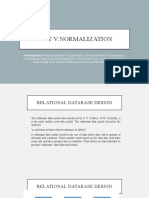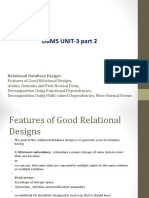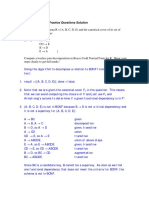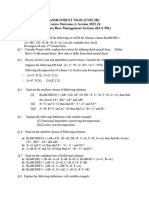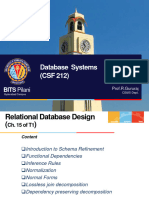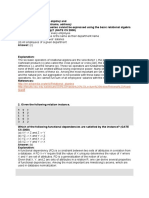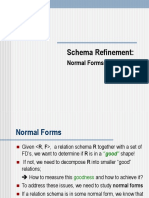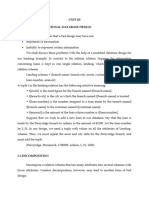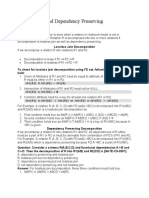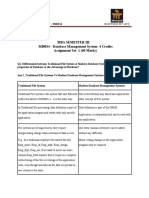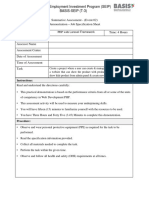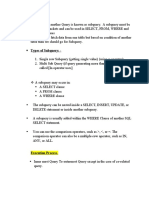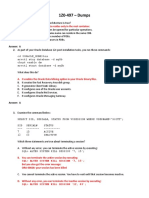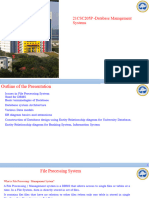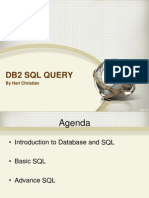0% found this document useful (0 votes)
7 views27 pagesRelational Database Design Notes
The document discusses relational database design, focusing on types of decomposition, specifically lossless and lossy decompositions. It outlines the conditions for lossless decomposition and provides examples to determine whether specific decompositions are lossless or lossy. Additionally, it covers dependency preservation and the process of finding the highest normal form of a relation, including normalization techniques.
Uploaded by
masumrezarock100Copyright
© © All Rights Reserved
We take content rights seriously. If you suspect this is your content, claim it here.
Available Formats
Download as PPTX, PDF, TXT or read online on Scribd
0% found this document useful (0 votes)
7 views27 pagesRelational Database Design Notes
The document discusses relational database design, focusing on types of decomposition, specifically lossless and lossy decompositions. It outlines the conditions for lossless decomposition and provides examples to determine whether specific decompositions are lossless or lossy. Additionally, it covers dependency preservation and the process of finding the highest normal form of a relation, including normalization techniques.
Uploaded by
masumrezarock100Copyright
© © All Rights Reserved
We take content rights seriously. If you suspect this is your content, claim it here.
Available Formats
Download as PPTX, PDF, TXT or read online on Scribd
/ 27














